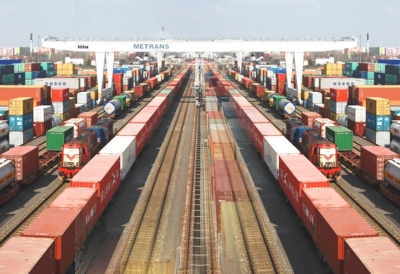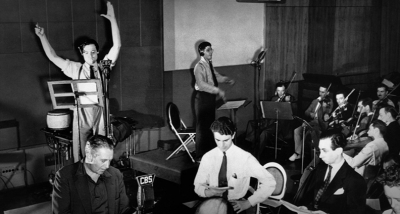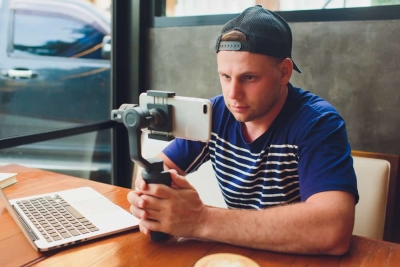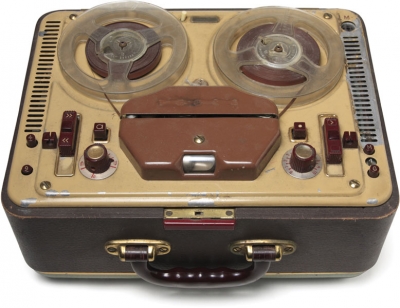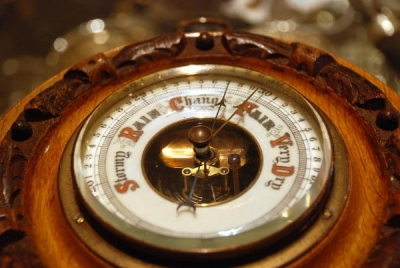
Inside a microphone is a metal disc, called a diaphragm. When a sound wave hits the sensitive diaphragm, it makes it vibrate at the same frequency. This causes a wire coil, beneath the diaphragm, to move up and down. As the coil comes near to a magnet below, it creates a pulse of electric current in the wire. The pattern of these pulses matches the pattern of the sound wave. The pulses can be sent along a wire to a loudspeaker, to be turned back into sound, or they can be recorded on a tape or compact disc.
When you speak, sound waves created by your voice carry energy toward the microphone. Remember that sound we can hear is energy carried by vibrations in the air. Inside the microphone, the diaphragm (much smaller than you'd find in a loudspeaker and usually made of very thin plastic) moves back and forth when the sound waves hit it. The coil, attached to the diaphragm, moves back and forth as well.
The permanent magnet produces a magnetic field that cuts through the coil. As the coil moves back and forth through the magnetic field, an electric current flows through it.
The electric current flows out from the microphone to an amplifier or sound recording device. Hey presto, you’ve converted your original sound into electricity! By using this current to drive sound recording equipment, you can effectively store the sound forever more. Or you could amplify (boost the size of) the current and then feed it into a loudspeaker, turning the electricity back into much louder sound. That's how PA (personal address) systems, electric guitar amplifiers, and rock concert amplifiers work.
Dynamic microphones are just ordinary microphones that use diaphragms, magnets, and coils. Condenser microphones work a slightly different way by using a diaphragm to move the metal plates of a capacitor (an electric-charge storing device) and generate a current that way. Most microphones are omnidirectional, which means they pick up sound equally well from any direction. If you're recording something like a TV news reporter in a noisy environment, or a rare bird tweeting in a distant hedgerow, you're better off using a unidirectional microphone that picks up sound from one specific direction. Microphones described as cardioid and hypercardioid pick up sounds in a kind of "heart-shaped" (that's what cardioid means) pattern, gathering more sound from one direction than another. As their name suggests, you can target shotgun microphones so they pick up sounds from a very specific location because they are highly directional. Wireless microphones use radio transmitters to send their signals to and from an amplifier or other audio equipment (that's why they're often called "radio mics").
Picture Credit : Google
